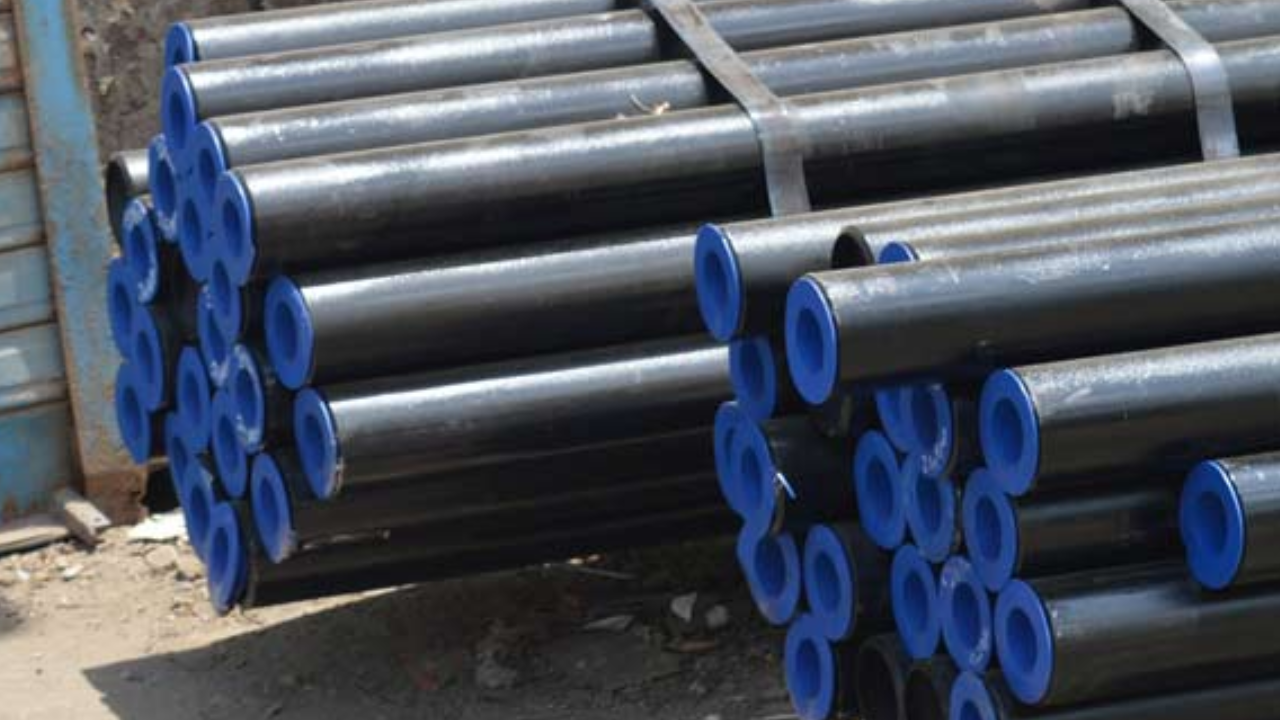ASTM SA53 pipe, also referred to as ASTM Grade B pipe, is intended for mechanical and pressure applications, it can also be used generally in steam, water, gas, and aviation. It is perfect for shaping operations like coiling, bending, and flanging, and for welding as well, under certain conditions. Water supply systems usually use A53 ASTM Grade B pipes, both for non-potable water purposes and the distribution of potable water.
The pipe in ASTM A53 Grade B is suitable for covering and welding. The nominal (average) wall is a seamless, welded, black, and hot-dipped galvanized pipe for coiling, bending, flanging, and other specialized operations. It is not advised to flange continuous-welded pipes. An order should include the function for which the pipe is intended.
Applications and Usage of ASTM A53 Grade B Piping
Black, hot-dipped galvanized steel pipe, ASTM A53 Grade B, is constructed either seamless or welded and is extensively utilized in a variety of industrial settings. Many people choose it for a variety of uses due to its strength, cost-effectiveness, and versatility. Utilizing A53 ASTM Grade B piping, some typical uses and applications are as follows:
ASTM A53 Grade B Pipes for Oil and Gas
Commodity processing, maritime uses, and the transfer of gas and liquid for oil and gas are just a few of the uses for pipes. Petroleum, kerosene, and propane pipes frequently need anti-corrosive coatings, which we are content to offer for our customers. In most cases, it is less expensive to make ASTM A53 the pipes, which typically composed of low alloy steel or carbon steel, than tubing.
The most important measurement to make is the internal diameter of the pipe in order to estimate the amount of product that may allow flow it. Crucial characteristics to take into account include yield strength, ductility, and pressure rating.
ASTM A53 Grade B Pipes for Structural Steel
Pipe made to A53 ASTM Grade B can be utilized for a multitude of structural purposes and applications because it comes in an extensive range of grades and diameters. Among the many common applications for structural pipe are columns, bollards, structural supports, signposts, and pilings. These are widely used steel pipes.
ASTM A53 Grade B Pipes for Metallic Conduit
Strong steel containers known as metallic pipes for conduit are used to transport individual conductors in electrical wiring within a structure or construction, while shielding them to protect against collision, moisture, and chemical vapors. Conduit pipes and metallic electrical tubing are also referred to as electrical metallic tubes (EMT).
Conduit pipes are classified according to the material they are made of, the thickness of their walls, and the mechanical stiffness of their joints. Steel tubes that have been galvanized and have a wall thickness that permits threading are used to create conduit pipes.
ASTM A53 Grade B Pipes for Conveyor Roller
ASTM A53 compliant conveyor roller pipes can be machined to create conveyor rollers. Components of conveyor belts utilized to move goods or loose bulk commodities like coal, sand, or iron ore are known as Roller Conveyor Pipes. This system’s conveyor roller pipes are essential since they allow for transportation.
As it circles around the roller pipes and pulleys, the conveyor belt moves the cargo. The pulleys for the conveyor in charge of pushing the belt, keeping it taut, and directing it in the appropriate direction. Conveyor belt transportation from one drum to another is the responsibility of Roller Conveyor Pipes. Their sole purpose is to support the belt.
Sum Up
It’s crucial to remember that combustible liquids or gases should never be transported piping at high pressures or temperatures. You might need higher-grade materials for those applications. To be able to guarantee that piping is appropriate for the intended use, it is also essential to take into account elements like pipe size, wall thickness, and the particular environment in which the piping will be used.


